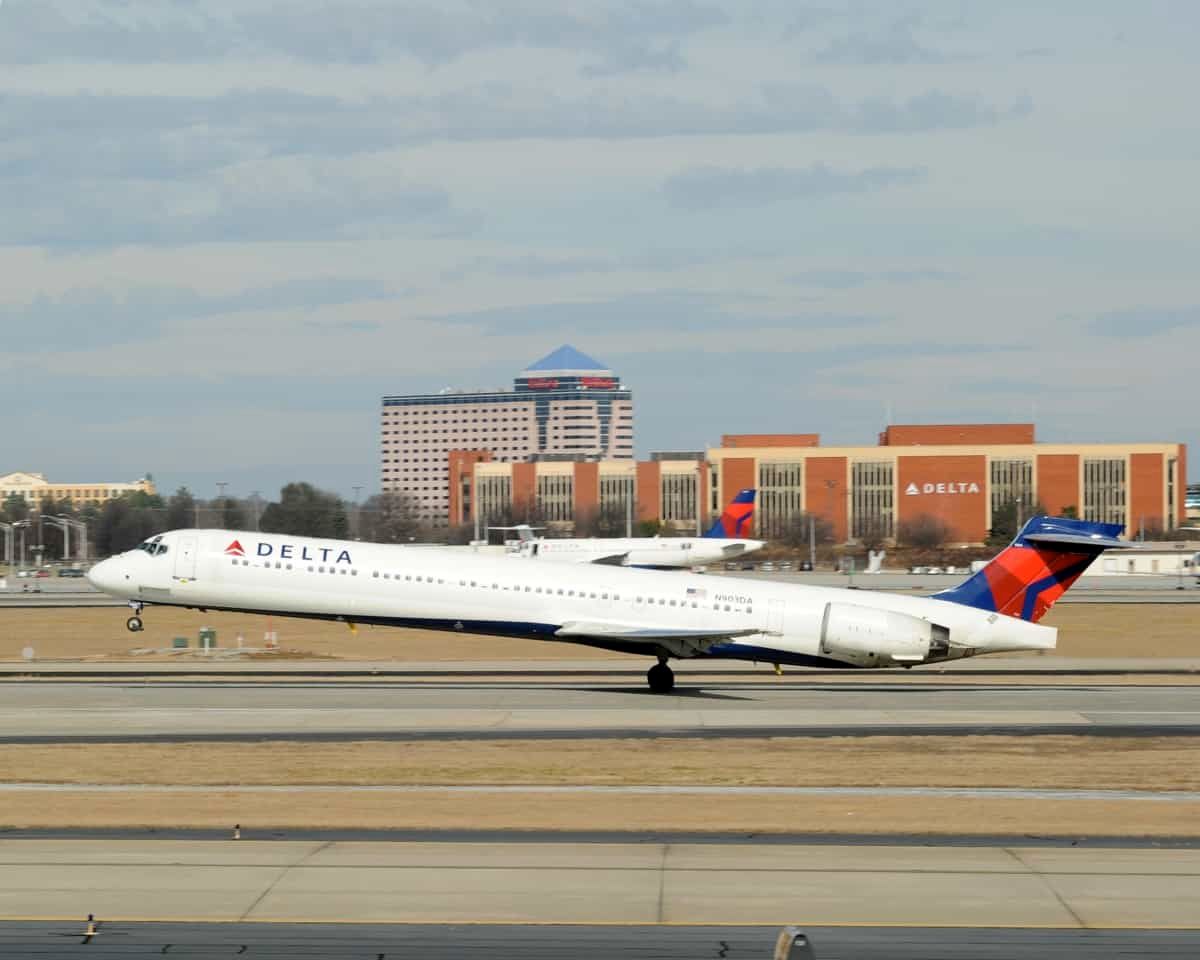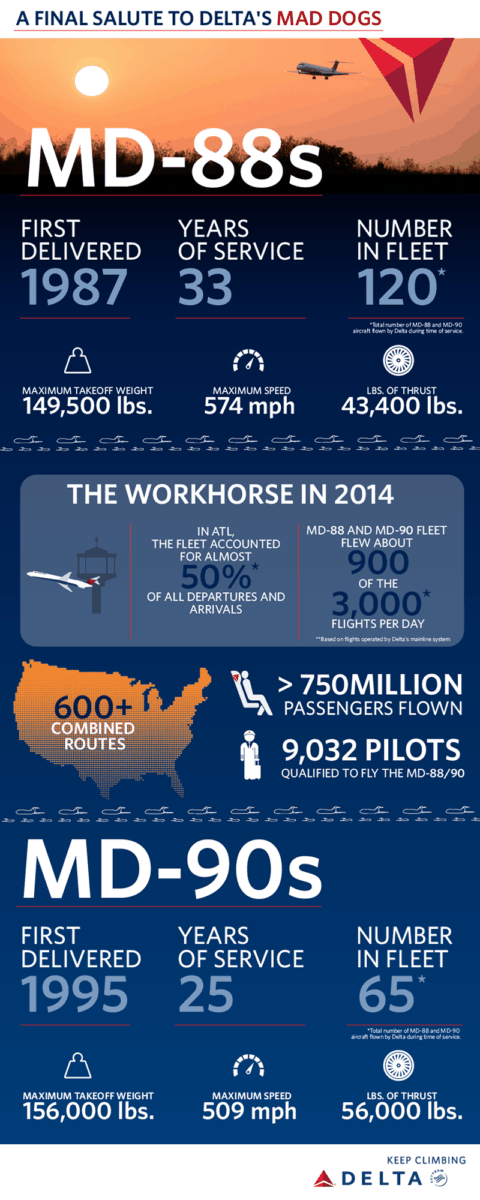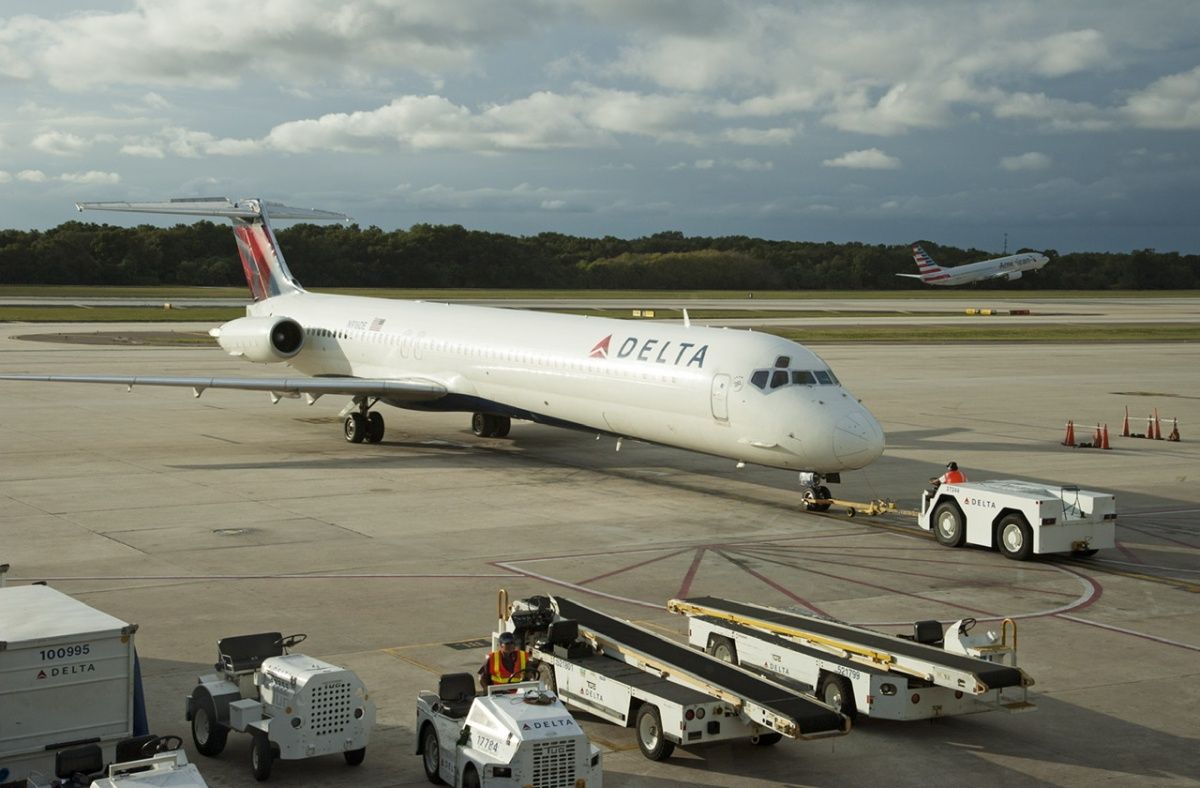Last month Atlanta-based Delta Air Lines announced that it was going to retire its MD-88 and MD-90 aircraft sooner than they had planned due to the COVID-19 pandemic. With this in mind, we thought we would take a look and see what has happened to Delta's
MD-88/90 fleet.
The coronavirus has had a devastating effect on the airline industry, forcing airlines not only to ground planes but also to re-evaluate their plans. In Delta's case, it grounded nearly half of its fleet, which equates to around 600 mainline and regional aircraft.
Stay informed: Sign up for our daily aviation news digest.
Delta decided to retire its MD-88/90 fleet early due to COVID-19
Of the grounded planes, many of them were nearing the end of their working life. Delta's 149-seat MD-88 was scheduled to retire at the end of 2020, but this was brought forward to June because of the crisis. Before the COVID-19 outbreak, Delta operated 47 MD-88s and 29 MD-90s across its domestic network.
Affectionately known as the "Mad Dogs," the MD-88 and MD-90 have kept the McDonnell Douglas name alive despite the aircraft manufacturer disappearing in a 1997 merger with Boeing. The last MD-90 took off from Houston on Jun 2 while the final MD-88 flight departed Dulles on the same day. Both aircraft arrived at Delta's central hub at Hartsfield–Jackson Atlanta International Airport (ATL) before flying on to Arkansas International Airport (BYH) for storage.
Historically, Delta had a huge fleet of MDs. According to Planespotters, it flew 164 MD-80 aircraft and 75 of the MD-90 line. Both had begun to be phased out in 2017, all sent to storage for the time being. Some have already been scrapped, but it's unlikely that any will go on to work for another airline, owing to their age.
Delta was the launch customer for the MD-90
Delta has had a long history with McDonnell Douglas taking delivery of the first DC-9 in 1965 and the MD-88 in 1988. Delta was also the launch customer for the MD-90 in 1995.
At one point, Delta had a fleet of 185 of the DC-9 variants flying roughly 900 flights per day across the continental United States.
When speaking about what it is like to fly the MD-88 and MD-90 compared to more modern fly by wire planes Delta First Officer, Kurt Tahara is quoted by Forbes as saying, the MD-88 and MD-90 are "still very traditional hand-flown airplanes. Everything you control goes through cables and pulleys."
"The elevator is totally manual," Tahara said. "So is turning the airplane – cables, and pulleys out to the control tabs. They are very literally hands-on airplanes, something we are not going to see again."
As for the history, "Going back to the DC-9, even parts of the DC-3 made their way onto it," Tahara said.
"Some of the knobs go all the way back to the 1930s.
"Douglas was really good about using things over and over. So much aviation history was handed down."
Delta's fleet has an average age of 14 years
Delta's fleet of planes has an average age of 14 years, while United's fleet averages 15.7 years. Of the big three, American Airlines has the youngest fleet with an average age of 11 years that will go down to 10 years by the end of 2020. American Airlines flew its last MD-80 in September of 2019.
While there will be fewer MD-80 family jets in the sky, the aircraft's legacy lives on the form of the Boeing 717, originally marketed as the McDonnell Douglas as the MD-95. While it is sad to see these old T-tail jets go to the aircraft boneyard, newer, more fuel-efficient planes are the future.
What do you think about Delta retiring its "Mad Dogs"? Please let us know your thoughts in the comments.



